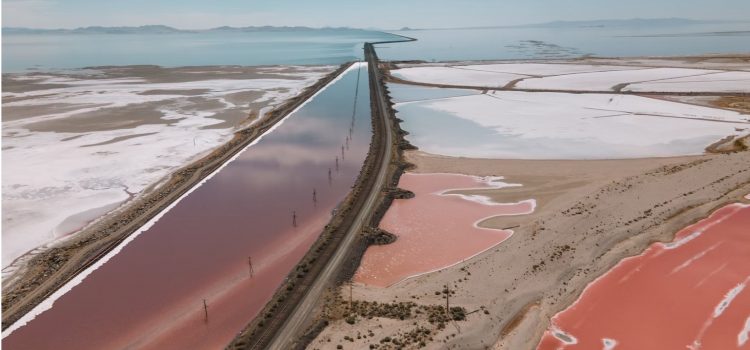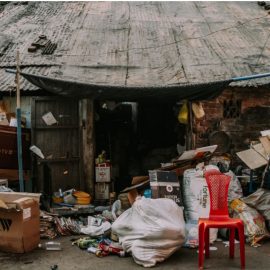
This is a free excerpt from one of Shortform’s Articles. We give you all the important information you need to know about current events and more.
Don't miss out on the whole story. Sign up for a free trial here .
Why is the Great Salt Lake drying up? What would be the impact of losing the lake? What can we do to restore the lake?
Scientists warn that the Great Salt Lake is drying up and could go completely dry in the next five years because evaporation from the lake exceeds inflow. If the lake goes dry, it will have severe ecological and economic consequences for Utah.
Read on to learn why the Great Salt Lake is drying up, the potential impacts of losing the lake, and one way we could save it.
The Great Salt Lake Is Drying Up
As the decades-long “megadrought” in the western United States continues, the Great Salt Lake is drying up and is in danger of going completely dry. In this article, we’ll break down what’s happening, what people are proposing to do about it, and what the potential impacts could be.
Why Is This Happening?
A megadrought is just a drought on a larger scale: a period of less-than-normal rainfall or water availability that affects a large area and lasts for decades.
Most of the western United States has been in a megadrought since the 1990s or early 2000s. As of 2021, scientists concluded the current megadrought is worse than the Dustbowl of the 1930s. In fact, it’s the worst megadrought to hit the western U.S. in over a millennium, based on studies of ancient trees and the weather patterns reflected by their growth rings.
The megadrought is impacting the Great Salt Lake in Utah, which we’ll discuss further below.
Effect on the Great Salt Lake
The reason why the Great Salt Lake is drying up stems from water use exceeding the water supply in Utah’s Salt Lake Basin, with the result that the Great Salt Lake has diminished in size by about 60% since the early 2000s. (As of 2001, the lake covered an area of about 1600 square miles. It was 75 miles long, 35 miles wide, and 33 feet deep.) No water flows out of the Great Salt Lake. It only flows in and then evaporates. But in recent years, evaporation has exceeded inflow by about 1.2 million acre-feet per year, as more of the inflow has been diverted for irrigation and other uses. Experts project that if current trends continue, the lake will dry up completely by 2028.
Impact of Losing the Great Salt Lake
The direct economic impact of the Great Salt Lake drying up on Utah’s economy is expected to be about $2.5 billion per year.
For one thing, it would destroy Utah’s brine shrimp industry. Companies harvest brine shrimp eggs from the Great Salt Lake and export them to prawn and fish farms, where they are used as feed. It would also hurt Utah’s fertilizer industry. Fertilizer companies produce potassium sulfate fertilizer from salt brines drawn from the Great Salt Lake.
Environmental Impact
Though harder to quantify, arguably the most significant impact of the lake drying up would be the loss of habitat. Currently, the Great Salt Lake and its surrounding wetlands provide unique habitats for migratory birds and other wildlife. Loss of this habitat could severely impact numerous species, as well as hurt Utah’s tourism industry.
Furthermore, scientists warn that sediments at the bottom of the lake are high in toxic minerals like arsenic, mercury, and selenium. If these sediments dry out and are picked up by the wind, the result would be toxic dust storms, which would pose a health hazard to the two million people who live in the greater Salt Lake City area.
Plan for Refilling the Lake
In January, a consortium of scientists, universities, businesses, and other interested parties issued a report calling for emergency measures to restore the Great Salt Lake and stop it from completely drying up.
Their proposed plan would establish a mandatory inflow of at least 2.5 million acre-feet of water per year to gradually refill the lake. Utah would have to cut water use in the Salt Lake Basin by almost 50% to meet this target.
While irrigation water would account for most of the cuts, the consortium is urging everyone in Utah to cut back on water use wherever possible—especially when it comes to residential and commercial landscaping.
It remains to be seen whether or to what extent the Utah legislature will adopt the proposed measures.

Want to fast-track your learning? With Shortform, you’ll gain insights you won't find anywhere else .
Here's what you’ll get when you sign up for Shortform :
- Complicated ideas explained in simple and concise ways
- Smart analysis that connects what you’re reading to other key concepts
- Writing with zero fluff because we know how important your time is






